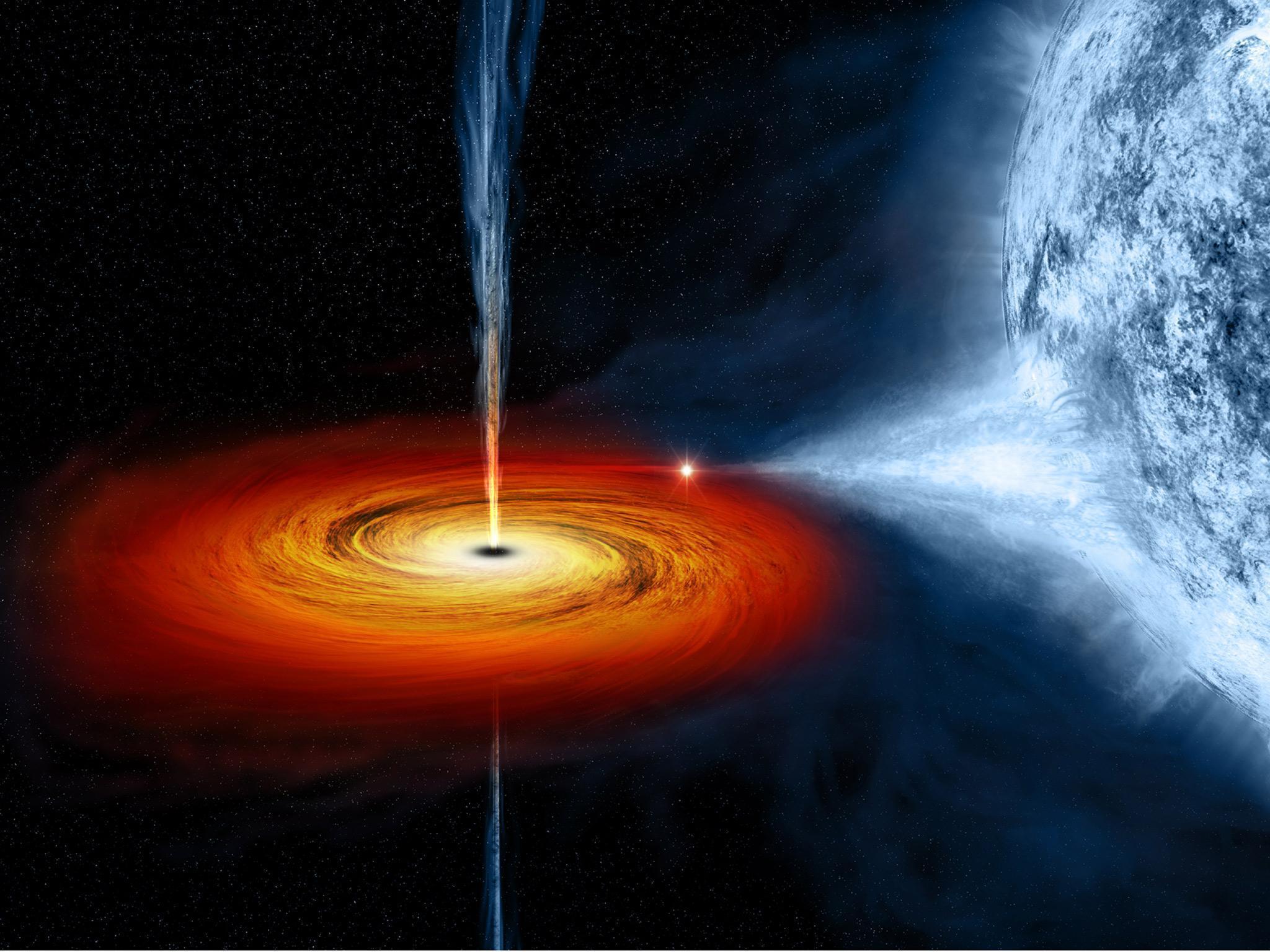Black hole to be seen for the first time ever with new computer algorithm
The picture of an event horizon will be ready in 2017, according to the team behind it

We are about to see a black hole for the first time ever, scientists hope.
A team of scientists are hope to use a computer algorithm and a range of equipment to take the first ever picture of a black hole’s event horizon next year.
The picture will be taken by a project called Event Horizon Telescope – a network of nine radio telescopes placed all around the world.
They hope to capture an image of the black hole’s event horizon, which they expect will look like a large crescent.
The image will test some of the central assumptions of physics. That will include general relativity, which states that something as big as a black hole would be able to bend space-time – which should be visible on the picture, if it is true.
The project is now close to being ready and has all of the elements in place, according to people working on it. Now the team hopes to take the picture in 2017.

"We're almost there,” team member Feral Ozel told BBC News. “The phasing in of the instruments has been done, the receivers are in place and the theoretical work has been done.
"There are quite a few challenges that need to be overcome to take a picture of a black hole - it's something that's extremely small in the sky. But what we're hoping for is a full array observation in early 2017."
There’s a black hole at the centre of our own Galaxy, in the middle of the Milky Way. But it is relatively small – 17 times the size of our Sun – and so at 25,000 miles away is hard to spot.
Making that even harder are the huge clouds of dust and gas that surround it, blazing and pulsing as they are disrupted by the swirling event horizon.
But the new project looks to take a picture by tying together all of the nine telescopes using a complex algorithm. Together the virtual telescope – which uses information from dishes in Antarctica, chile, Hawaii, Spain, Mexico and Arizona.
That has meant intensive work including the choice of what radio wave to look out for – with theoretical calculations settling on a specific wavelength of 1.3mm.
That should let the team get through the swirling dust cloud that surrounds the black hole, as well as managing to capture the hot gas that’s around the event horizon to shine brightly. It also needs to actually manage to get to Earth and through its atmosphere, too, which 1.3mm can do all of.
The algorithm is set to be demonstrated at the Computer Vision and Pattern Recognition conference this month.
Join our commenting forum
Join thought-provoking conversations, follow other Independent readers and see their replies
Comments